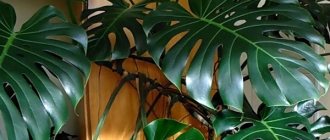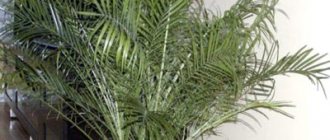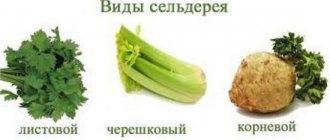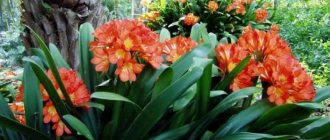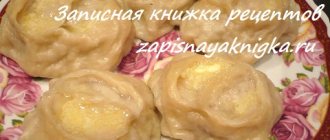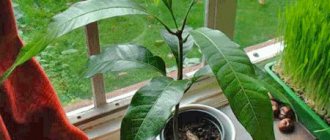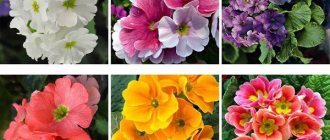Growing nolina from seeds
What is it like to grow nolina from seeds?
How difficult is it and is it even possible to get healthy nolina from seeds at home? I will share my experience with everyone and give some practical recommendations regarding cultivation. The bag contained brief instructions on planting seeds and subsequent care of the seedlings. Among other things, it was indicated that before planting, the proposed material must be soaked in water at room temperature for 2-3 hours, then planted in moist soil, lightly covered with earth and covered with film. Germination should take place at a temperature of +20. +23 degrees. Nothing was mentioned about the length of daylight hours. Soil moisture is moderate. If the outcome of events is favorable, nolina seeds germinate in 2 weeks. In the worst case, you will have to wait up to 6 months.
Nolina seeds were sown on June 20. So, I opened the bag of seeds and found 6 light brown grains. They are no larger than a match head. A photo of the seeds is attached below. According to the instructions on the bag, I soaked the seeds in water at room temperature. The soaking was carried out in a regular plastic cup; I poured water to the middle height of the grains. Why is that? It's simple. If the seeds are completely covered with water, air will stop flowing to them and the seed embryo may suffocate. Such seed does not germinate well. I read this wisdom on one authoritative forum, I follow this rule constantly and have no regrets.
To speed up the germination process of nolina seeds, they must first be soaked in water at room temperature for 2-3 hours.
While my seeds were safely swelling in the water, I began to prepare the greenhouse and soil. Growing nolina from seeds should take place in a humid environment, at a constant temperature and in light soil. Constant air humidity can be organized in a greenhouse. The latter is either bought in a store or made independently. The second option is both cheaper and more interesting. You can, of course, cover the pot with ordinary plastic film or glass, but in practice I will say that this is inconvenient. The film constantly breaks, and little air remains between the glass and the ground, and therefore there is a musty smell in the greenhouse.
I make a greenhouse from an ordinary plastic bottle, cutting it accordingly. I cut out the middle part of the bottle. I pour soil into the lower part, and the upper part with the plug serves as a lid for the greenhouse. This option is easy to use and does not smell of rotten earth. Contrary to the popular belief that the walls of a greenhouse should be opaque, in my greenhouses made from a transparent plastic bottle the soil was never covered with green algae.
It is recommended to grow nolina from seeds in greenhouses. This makes it easier to keep both humidity and air temperature at a constantly high level.
You can make soil for nolina yourself. To do this, mix leaf, turf soil and sand in a ratio of 2:1:1. But you can grow nolina from seeds in cactus soil.
There is a greenhouse, the soil has been purchased, and the nolina seeds have been soaking in water for 3 hours. It's time to plant them. How to plant nolina seeds correctly? Yes, everything is very simple. You need to pour soil into the greenhouse and moisten it with a spray bottle. The soil should be moist, but swamps should not be made. The soil needs to be leveled and lightly compacted. Then nolina seeds are laid out on the surface. It is recommended to sprinkle them with a layer of soil of 0.5-1 cm. But I decided to check how the presence of a covering layer affects the germination of nolina seeds. I sprinkled three of the six grains with earth, and left three to lie on the surface.
Nolina seeds are laid out on moist soil in a greenhouse. It is recommended to cover the seed with a layer of moist soil of 0.5-1 cm.
Nolina or bottle tree seeds are planted in the ground. Under what conditions does their germination occur? Firstly, the optimal temperature is +20. +23 degrees. It was not difficult for me to ensure the required temperature conditions, since the planting was carried out in the summer. Secondly, moderate soil and air humidity. I also coped with this by using a greenhouse and moderate watering with a spray bottle. Thirdly, the plant needs light. It was summer, there was a lot of light. To grow nolina from seeds at home, I chose the windows on the west side of the apartment.
I was pleased with the first sprout that broke through the ground 18 days after planting the nolina seeds. Two more germinated 22 and 23 days after planting the seeds. Three more grains remained in the ground. Over time, they became covered with mold. I just threw them out of the greenhouse. I removed the greenhouse lid only 30 days after planting the seeds. I still hoped that the grains remaining in the ground would germinate. But that didn't happen. I want to say right away that the top layer of soil has no effect on germination. My first seed to germinate was covered with soil. Then a sprout appeared on the uncovered grain, followed by another sprout from under the ground.
To grow nolina from seeds, you need a temperature of +20. +23 degrees, moderate soil and air humidity. Seedlings need bright, diffused light.
Care for seedlings was as follows:
1. I opened the greenhouse.
Plants of Australia
Of the 12 thousand species of higher plants, more than 9 thousand grow only on the Australian continent. Among them are many species of eucalyptus and acacia, the most typical plants for Australia. At the same time, plants found here are also native to South America, South Africa and the islands of the Malay Archipelago. This indicates that many millions of years ago there were land connections between the continents.
Since the climate of most of Australia is characterized by extreme aridity, its flora is dominated by dry-loving plants: special cereals, eucalyptus trees, umbrella acacias, succulent trees (bottle tree). Such trees suck moisture from great depths. The narrow and dry leaves of these trees are colored mainly in a dull gray-greenish color. Some of them have leaves facing the sun with their edges, which helps reduce the evaporation of water from their surface.
The deserts of the central parts of the continent, where it is very hot and dry, are characterized by dense, almost impenetrable thickets of thorny, low-growing bushes.
What is a bottle tree?
What does a bottle tree look like?
Characteristics of the bottle tree
At home, the bottle tree does not bloom, but lovers of unusual plants enjoy growing it. The characteristics of nolina are amazing:
Brachychiton: description
Belongs to the Sterculiaceae family. It can be both a bush and a tree. The continent of Australia is considered its homeland. Only in the northeastern part of the mainland can this species be found. The Australian bottle tree also gets along well in hot deserts, where precipitation is very rare.
It happens that brachychiton grows through the rocky surface of slopes; pedunculate oak also has this characteristic feature. Therefore, sometimes brachychiton is also called rocky tree or rocky brachychiton. Looking at them, a person experiences curiosity. There is a desire to learn more about them.
The leaves of the brachychiton plant look different. But they all have a dark green color and are distinguished by their bright saturation. If the branch is young, then the leaf has an ovoid shape; on old shoots they look like fused blades.
The lower part can be “swollen” to incredible sizes. The diameter sometimes reaches 3 m. If two such trunks grow together, they will look very bulky.
Tree roots suck water and various nutrients from the soil. To survive in a dry climate, nature endowed the plant with a trunk - a reservoir.
There is so much liquid in it that about a hundred people can quench their thirst. There have been cases where, in drought conditions, travelers were saved from thirst by encountering such a tree on the way. In addition to water, some representatives of the middle part of the trunk hide sweet juice.
Although the plant has a majestic size and a terrifying appearance, its flowers are cute and delicate. They resemble small pink and purple bells, collected in a kind of tassels.
As for the fruits of brachychiton, they look like oblong boxes. These greenish-gray “packages” contain seeds. In appearance they resemble nuts covered with coarse hair.
Australian cuisine prefers to use them in food as spices. These nuts are very tasty. They can be eaten with cheese and fried.
Domestic Brachychiton
This plant is of great interest to lovers of indoor flowers. At home, the bottle tree is presented in the bonsai style. That is, you can grow a small copy of it on your own windowsill.
Bakarneya
This representative of the bottle tree has Mexican roots. The plant belongs to the asparagus family. Many people prefer to call it nolina.
They are distinguished by their rigidity and the fact that the function of moisture evaporation is practically absent. Residents of Mexico use them as material for weaving baskets and hats. It is noteworthy that every year the lower leaves, covered with new shoots, die off.
By the way, moisture and nutrients most often accumulate in the spherical-shaped trunk of nolina. When dry times set in, it greatly loses its shape and shrinks, giving its contents to the trunks. Nolina roots are located close to the surface and have many branches.
How to plant a bottle tree from seeds?
If you try, it is possible to grow bocarney from seeds. The main problem for this is the purchase of seed material. Under artificial conditions, the plant does not bloom, and it is impossible to expect fruit from it. Many online stores for gardeners offer to purchase nolina flower seeds. By following simple instructions, you can grow an exotic tree at home.
Bottle tree soil
An important condition for the growth of bocarnea is the correct composition of the soil. To prepare it, you need to mix peat and sand in equal proportions. Some gardeners recommend keeping the pot of prepared soil for nolina in a steam bath for half an hour before planting. This method helps to destroy any microorganisms and insect larvae that may be in the soil. Good drainage is a necessary condition for the bottle tree not to get sick; it does not tolerate stagnation of moisture. The bottom of the pot should be filled with gravel or stones in advance.
Plants and animals of Australia bottle tree
| Bottle tree of Australia |
In addition, in the upper part of the trunk, very sweet juice accumulates in special cavities. This is real nectar! The whole plant is used. Thus, bottle tree seeds are roasted or eaten raw. The roots of young trees are very juicy and are eaten as root vegetables.
To get tasty tree nuts (seeds) you have to work hard. The fact is that the seeds are in pods, the peel of which is thick. In addition to this, each seed has bristles on top. It is because of this bristle, a kind of chiton, that the tree received its name - brachychiton. Collecting seeds is carried out only with gloves, as the stubble causes itchy skin.
The seeds ripen in pods, the length of which reaches 10 centimeters. The pods look very impressive on the tree due to their purple hue. It is from these boat-shaped pods that the seeds, which are covered on the outside with bright yellow hairs, are obtained.
The leaves of the bottle tree are succulent and dark green in color. As for their shape, the leaves on the same tree can have different shapes. It's all about the age of the foliage. So you can see how simple oval-shaped leaves are adjacent to leaves that have three to five lobes. This is possible with fairly old trees.
Bottle tree - care at home
Like any indoor plants, nolina needs constant care. Many people like to breed unpretentious indoor species, which include the not capricious beaucarnea; caring for it does not require special knowledge and skills, but if you forget about the tree, it will quickly die. In order for the plant to please with its amazing shapes and bright crown, it is worth remembering three necessary conditions, the fulfillment of which guarantees the production of a healthy perennial. The bottle tree needs:
Feeding the bottle tree
Bocarnea grows very slowly, and unlike other indoor perennials, it does not require frequent fertilization. The bottle tree is a succulent, and it loves fertilizer complexes specially selected for these types of plants. In the summer, when the plant actively absorbs nutrients, it can be fertilized with special liquid compounds “Agrecol” and “Flower Paradise”. The indoor bottle tree responds well to the dry mixtures “Master” and “Agricola”. The plant should be watered with fertilizers once every 3 weeks.
How to water a bottle tree?
How to prune a bottle tree?
Botanical experts disagree on whether it is necessary to cut off the green part of the nolina. The bottle tree indoor plant does not require any professional pruning. Sanitary care for it includes carefully trimming the dry tips of the leaves without touching their living part. In order for the plant to produce additional shoots from dormant buds, some experts advise pruning the top of the tree. This must be done under the supervision of experienced specialists - errors in the process can threaten the tree with death.
Growing Barchichiton
Caring for brachychiton is somewhat troublesome. Optimal temperature conditions are required, proper humidification and lighting must be provided.
In order for a homemade bottle tree to please the eye, it must be planted in special soil. He will be most comfortable in a stable pot made of a material like ceramic.
Temperature
For him, sunlight is the source of all life force. Hot direct sunlight gives brightness to the leaves and stability to the trunk. It is advisable to keep it on the south side close to the window. Without sunlight, the tree will not survive.
In the summer-spring period, brachychiton should be provided with a warm room, which is often ventilated. In winter, it cannot be kept at temperatures less than +16. In order for a tree to grow quickly, it must be provided with warmth from the surrounding temperature.
Watering and fertilizing
The bottle tree is not so whimsical in matters of moisture. It practically does not require abundant watering. As soon as the soil has dried, you can start moistening. Sometimes once a week is enough.
By the way, in cool winter conditions in the absence of moisture, the plant can stay for up to two weeks inclusive. High humidity is not important for it, so brachychiton does not need constant spraying with water.
The only important point in growing a bottle tree is to try not to place it near the battery.
In spring and summer, the plant can be fed with mineral fertilizers.
Plant care
This extraordinary bottle palm is unpretentious. She does not need abundant watering. It is enough to moisten the soil after drying once a week, and in winter - reduce it to twice a month.
You can fertilize for the first time six months after planting. To do this, use special nitrogen fertilizers or those that are most suitable for succulents. Every year for four years, nolina, as a rule, requires replanting, because the root system of the soil becomes limited in space. Then it is moved to the renewed soil every three years.
The best method of propagation is considered to be propagation of the bottle tree from seeds. Of course, you need to take into account that each species is planted in a certain annual cycle.
This rule especially applies to those plants that are motionless and do not bloom in summer. All of them, regardless of the type, require maximum prepared lighting, and in times of cloudy weather, when seating, it is possible to connect additional light.
Seedlings do not need air humidification, therefore, in order for the seed to germinate, it must be covered with a glass flask. For quick germination, you can try soaking the seed in a weak solution of potassium permanganate. Those that will float on the surface in a day are best planted separately.
Perhaps they are infected with something. Others can be put all together. This preparation will produce healthy shoots, and you can be sure that infection from diseased seeds will not occur. In this regard, both planting and development of young animals will go faster.
You cannot make mistakes when caring for your bottle tree at home.
Bakarnea is a stately and noble plant. It can be kept in any room. It is not poisonous. The bottle tree, as a representative of the flora, does not cause allergies. Pets often eat nolina leaves. This affects the appearance of the flower, but not the health of the pets.
Source
Nolina or bocarnea Care at home Growing from seeds Photo of a bottle tree
Nolina (lat. Nolina), bokarneya, bottle tree, elephant palm is a perennial woody tropical plant of the Agave family (lat. Agavaceae). Natural habitat - Mexico, southern USA. The genus contains more than 30 plant species, the main part of which will be discussed in the article.
Nolina is a plant that has all the capabilities to survive in the desert. It comes from the same places as cacti, so it has similar properties. The root does not go deep into the ground, but is located at the surface. To accumulate water at the bottom, nolina has an extension of the trunk - a caudex, thanks to which it can survive in conditions of rain falling twice a year. The leaves are leathery, so they capture moisture from the air and practically do not release it back.
Another homemade bottle tree
It is called differently: nolina, bocarnea, bottle palm. It comes from the agave family and boasts (in addition to the shape of the trunk) long – up to a meter – narrow leaves. Nolina blooms only in greenhouses, where it has enough space, and only with age. Bocarnea is valued by gardeners for its variable appearance: if you water the plant only after the soil has completely dried and keep it in dry air in bright light, you will get a pronounced “bottle” with a not very thick and long “mane”. If the light is given moderately and watered regularly (but not abundantly), there will be a lush crown with a faintly noticeable swelling on the trunk.
Source
Growing and caring for homemade nolina
Nolina bottle tree growing at home
Under conditions of artificial growth, the most popular is bent nolina. It will be discussed further, since other species are not cultivated or grow only in greenhouse conditions.
Nolina is an exotic tall plant. When a young seedling is bought, it seems as if it is a large specimen, although its length may not exceed a meter. But over the years, the plant develops, grows intensively, no longer fits on the windowsill, and then it can even rest against the ceiling. Another feature of cultivated nolina is the lack of flowering. Flowering occurs exclusively in wild conditions - this happens extremely rarely in a greenhouse. In apartment conditions this is a completely unrealistic task.
Nolina has many positive qualities: she has a noble appearance and practically does not need to be looked after. Even cacti, which are able to survive in harsh conditions, require more care than this plant. But there are some rules. They must be followed so that she does not die.
How to care for nolina at home
Nolina bocarnea in interior design photo Nolina flower photo
Temperature for bocarnea
The natural habitat of nolina is the desert. This means that she loves warmth. In summer the air temperature should be 20-25 degrees, in winter - 10-12. You can deviate from the recommendations - the main thing is that it is not colder than 7 degrees Celsius. In the summer, nolina feels comfortable in the garden outside, if there is no precipitation or high humidity.
Lighting
It is very important for nolina to provide a well-lit place. This could be a south or southwest window. If the plant is grown on the floor, you need to place it in the brightest place. The pot can be placed in direct sunlight and not be shaded, since bright sunlight is not scary.
With a slight lack of light, the greens will not begin to fade. The growing organism will simply direct the shoots towards the window, which can lead to serious bending of the trunk. To prevent this, you need to periodically rotate the pot. Experts recommend turning it 45 degrees clockwise once a week. This allows the plant to grow evenly. If any curvature occurs, it can be easily corrected by turning the pot in the right direction.
How to water nolina
The plant is most afraid of excess moisture. This is the only way to destroy it. Even mechanical damage is not as bad as excess water, because nolina grows in the desert and under natural conditions receives water extremely rarely.
Air humidity
This is an optional indicator that you can ignore. The plant feels great in any humidity, so it is not necessary to spray it. If you want to organize a similar procedure, you need to make sure that the water is only on the leaves and not on the trunk, because this can cause it to rot.
The soil
Nolina loves airy, light soil that is well saturated with air. The easiest option is to buy a ready-made substrate for succulents, which is sold at any flower shop. You need to add gravel or expanded clay to it to make it more airy and light. If you want to prepare it yourself, you need to mix clay soil, leaf humus, sand and expanded clay in a ratio of 2:2:1:1. It is also recommended to add activated charcoal or charcoal to the mixture - it will enrich the soil.
How to feed a bottle tree
Exclusively in the summer, the bottle tree is fed with mixtures for succulents at intervals of two to three weeks.
Nolina transplant video
How often should I transplant?
The young plant requires replanting annually in the spring to slightly enlarge the pot. The older Nolina becomes, the less transplants she requires. When the plant reaches 15-20 years old, replanting is almost impossible, since it is very large, with developed roots. This is done only in emergency cases when the trunk or root begins to rot. In other cases, the upper part of the soil cover is replaced.
How to choose the right pot for bocarnea?
How to care for nolina at home Proper transplantation
Not all pots are suitable for nolina, since the plant is caudex and may knock over some containers and deteriorate in others. Choose a wide and low vessel that has drainage holes at the bottom. Width and height should have a ratio of 1:3. A third of the pot is filled with drainage (expanded clay or gravel).
The main problems in growing nolina
This plant is distinguished by the fact that it is practically not susceptible to attacks from dangerous diseases and pests. The main problems appear solely as a consequence of improper cultivation of nolina, and they can be quickly corrected.
Pests
Pests are an extremely rare occurrence for nolins. If the plant is in low light conditions or is over-watered, it may be attacked by scale insects, thrips, and spider mites. The latter parasite is the most common, since in hot summers it infects other plants from which it can migrate. It is necessary to remove all pests from the leaves. A cotton swab is moistened with a soap solution and passed over green foliage. Then they purchase actelic or other insecticides that are used to treat the plant. Then they correct the growing conditions (increase the humidity if we are talking about spider mites) and make sure that parasites do not appear.
Beaucarney diseases
Diseases occur if nolina is grown in conditions of insufficient sunlight and excess moisture. If you eliminate errors in care, the diseases will go away on their own.
The main mistakes in caring for home nolina
What to do if the root of nolina rots
Rot occurs only if the owners overdo it with watering. As soon as you notice the danger, you need to act immediately. The plant is freed from the pot, the root is carefully examined, all rotten areas are cut out with a disinfected instrument, and the sections are treated with a weak solution of potassium permanganate.
Growing nolina from seeds
Nolina from seeds Nolina seeds photo
A more common way to propagate nolina at home is by growing it from seeds.
Nolina growing from seeds photo seedlings
Germination of nolina seeds is uneven. When the shoots have appeared, you need to wait for the root to germinate sufficiently, then use a toothpick to put it down. You cannot separate the sprout from the seed, since the latter contains the maximum amount of nutrients needed by the young plant.
When a month passes after germination, an inverted plastic pot with holes is placed instead of film, so that it partially retains moisture. When nolina sprouts are two months old, they are picked. Young plants are planted completely in independent pots only after they reach six months of age.
How to propagate nolina
Nolina is a magnificent exotic plant that does not require special care. It will be a beautiful decoration for a country house or a spacious apartment, as well as an elite office space or conference room.
Types of nolina with descriptions and photos
Nolina longifolia
Nolina longifolia photo
A large plant distinguished by a powerful corky bark dotted with cracks. Grows up to 3-4 meters. Most of the trunk contains the remains of old dried leaves.
Nolina recurvata
Nolina recurvata photo
The tree trunk has a bottle-like swelling at the bottom. At the top the plant is weakly branched. The thickness of the stem reaches one meter. The top of the tree is formed from linear ribbon-like leaves collected in a rosette. The characteristics of the leaves are as follows: dark green, leathery, sinuous, narrow (up to 2 cm), long - up to 1 m. Under natural conditions, when flowering in summer, nolina is covered with cream-colored flowers that form panicle inflorescences. The popular name for recurved nolina is “elephant’s foot” because of the shape of the trunk, and “pony tail” because the top is formed by a lush bunch of large, long greenery.
Nolina Lindheimeriana Nolina lindheimeriana
Nolina Lindheimeriana Nolina lindheimeriana photo
It is popularly called the “devil’s lace”, since the dense leaves more than once became an obstacle to the wanderer and did not let go of their embrace. This is a very low plant whose trunk is almost invisible.
Nolina matapensis Nolina matapensis
Nolina matapensis Nolina matapensis photo
Also called Bergrass tree, it grows up to 2 m. When the leaves dry out, they remain on the stem for a long time until they fall off.
2 Comments on “Nolina or bocarnea Care at home Growing from seeds Photo of a bottle tree”
Good afternoon I bought Nolina on 02/27/18, there were 3 tubers in the bottom of the flowerpot, the soil was dry. Transplanted on 03/01/18 into a flowerpot with a diameter of 23 cm. and height 7cm. I didn’t water it for 6 days and small reddish specks appeared on the leaves (along the entire length of the leaves), and the tips of the leaves began to dry. I watered it with bottom watering, but not abundantly. Do you think it will help?
Alevtina, where are your nolins? Move them away from radiators, place a humidifier or a plate with moss, moistened pebbles, etc. nearby. Do not water again until the soil dries out. If you notice that the nolina continues to hurt and dry out, it means that the plant received an infection during replanting. You will need to remove the nolins from the soil, check the roots for rotting, cut off all damaged roots, treat them with phytosporin or pink potassium permanganate, let the moisture dry slightly and plant them in clean soil and a disinfected pot. Do not water after this for two weeks.
Avoid drafts and sudden temperature changes, let the nolina adapt a little. It should be okay over time. Can you share your results?
Source
Plants and animals of Australia bottle tree
Bottle tree (Brachychiton rupestris) or rock brachychiton.
Bottle trees grow in eastern Australia. The local population uses all parts of this tree, from roots to seeds. The juicy dark green leaves of brachychiton are fed to livestock, and the seeds and roots of the young plant are eaten.
The leaves of the bottle tree are succulent and dark green in color. As for their shape, the leaves on the same tree can have different shapes. It's all about the age of the foliage. So you can see how simple oval-shaped leaves are adjacent to leaves that have three to five lobes. This is possible with fairly old trees.
The flowers of the bottle tree are shaped like bells. They are small: the diameter of each bell is about 1.5 cm. The flowers are collected in inflorescences and therefore make an unforgettable impression. Bells can be of different colors: greenish, cream or white. Inside the bells are completely covered with dots of different shades.
The seeds ripen in pods, the length of which reaches 10 centimeters. The pods look very impressive on the tree due to their purple hue. It is from these boat-shaped pods that the seeds, which are covered on the outside with bright yellow hairs, are obtained.
The whole plant is used. Thus, bottle tree seeds are roasted or eaten raw. The roots of young trees are very juicy and are eaten as root vegetables. To get tasty tree nuts (seeds) you have to work hard. The fact is that the seeds are in pods, the peel of which is thick. In addition to this, each seed has bristles on top. It is because of this bristle, a kind of chiton, that the tree received its name - brachychiton. Collecting seeds is carried out only with gloves, as the stubble causes itchy skin.
Recently, brachychitons have begun to appear, which can be grown at home. Flowering of a plant at home can only occur in isolated cases with very good care. The plant can go without water for a long time, but this applies to the winter period. In summer it is necessary to water regularly, but not abundantly.
An adult plant must be placed in a spacious pot so that the massive above-ground part of the plant becomes stable. In order for the plant to develop normally, it should not be placed on windows facing north, since the plant is demanding of sunlight. The most acceptable temperature is considered to be 25-28°C in the summer months, and 10-16°C in the winter. Regular ventilation of the room is very important, since brachychiton cannot withstand stagnant air.
Brachychiton is propagated using cuttings and seeds. The plant needs to be replanted every year if it concerns young plants. Older plants will need replanting every three or four years.
Source
